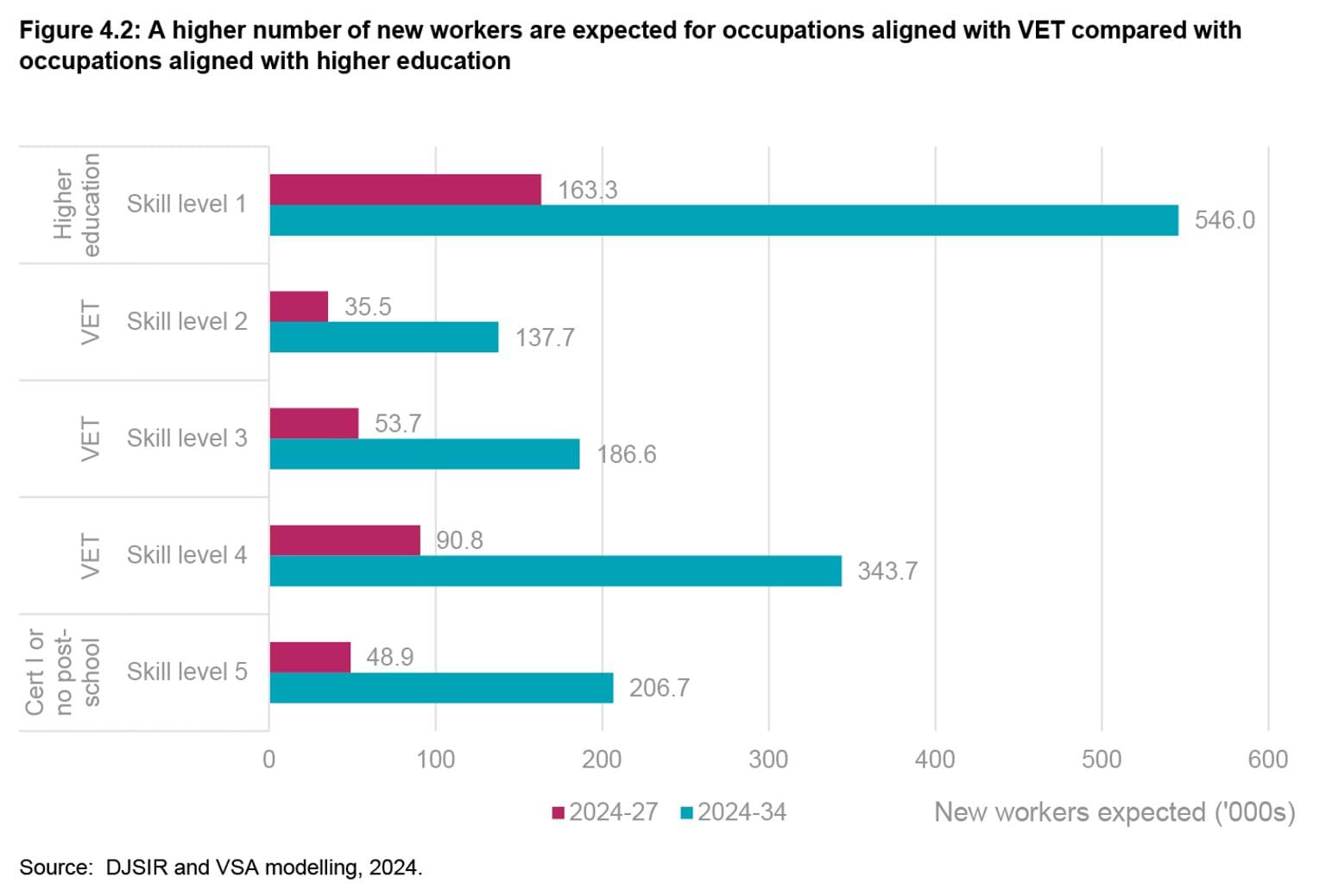The demand for VET and higher education graduates is expected to grow over the coming years. The Australian and New Zealand Standard Classification of Occupations (ANZSCO) assigns skill levels to each occupation to measure the level of skill typically required to perform tasks of a particular job competently, based on the level of formal education, previous work experience and on-the-job training. Each occupation is assigned a skill level between one and five, with skill level 1 corresponding with a higher education qualification and skill levels 2 to 4 with a VET qualification.
Figure 4.1: Main training pathway across occupational skill levels
| Qualification alignment | Skill level | Description |
|---|---|---|
| Higher education | Skill level 1 | a bachelor degree or higher |
| Vocational education and training (VET) | Skill level 2 | an associate degree, advanced diploma or diploma |
| Skill level 3 | Certificate III (including at least 2 years of on-the-job training) or Certificate IV | |
| Skill level 4 | Certificate II or III | |
| Other | Skill level 5 | Certificate I or compulsory secondary education |
There may be instances where previous work experience or on-the-job training for an occupation can substitute for formal qualifications, or cases where these elements may be required in addition to the qualification. The skill level of an occupation is therefore an indicative measure only of the qualification needed for the job.
Around 163,000 new workers over the next three years (or 41.6 per cent of new workers) are expected to be needed in occupations associated with a higher education qualification (skill level 1). A higher number of new workers will be needed in occupations that are aligned to a VET qualification (skill levels 2 to 4), projected at 180,000 (45.9 per cent) over the same period.
Looking over the next decade through to 2034, about 546,000 new workers (38.4 per cent) are expected to gain employment in occupations aligned with higher education and a further 668,000 (47.0 per cent) are expected in occupations aligned with VET.
The higher share of new workers in VET-aligned occupations is largely due to the higher rates of retirement expected in these jobs, relative to occupations aligned with higher education.
The combination of VET and university-aligned occupations suggests that over the next decade, approximately 85 per cent of new workers expected in Victoria will need skill levels commensurate with a post-secondary school qualification to meet the state’s future skill needs (excluding Certificate I).
Updated


